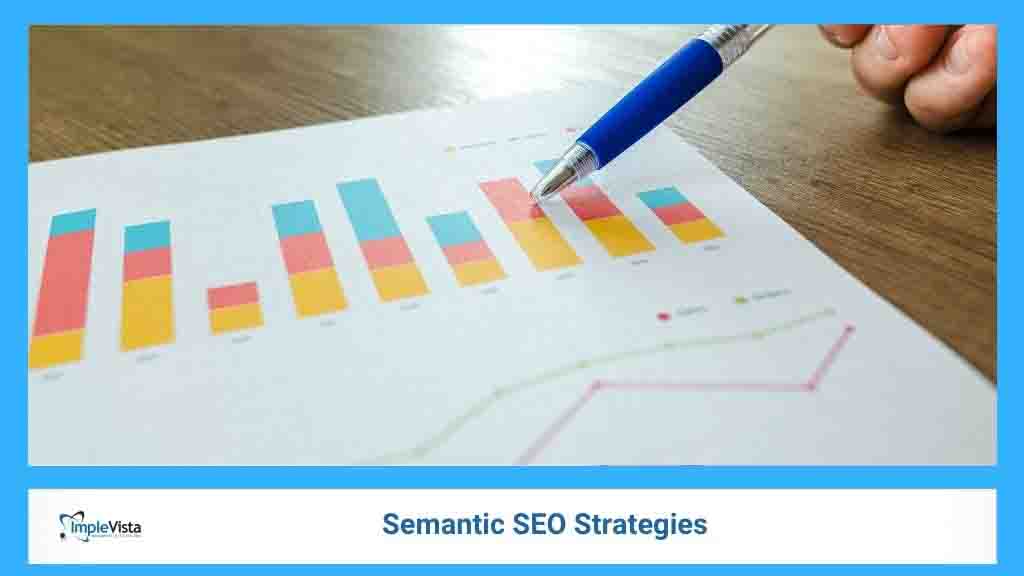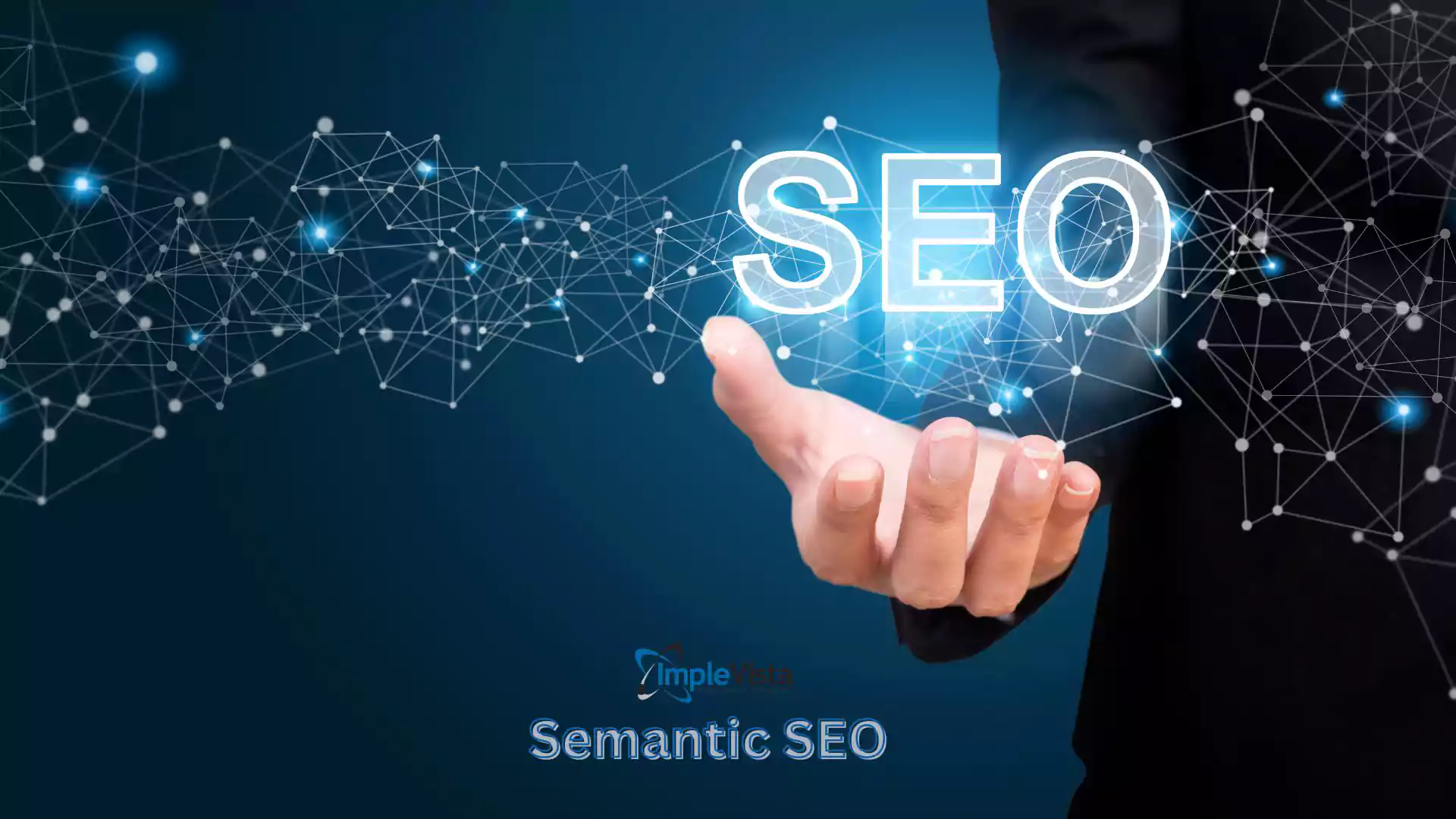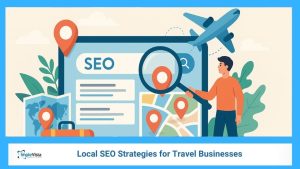Semantic Markup: Supercharge Your SEO Strategy in 2025
Ever find yourself scratching your head, wondering why some websites skyrocket to the top of Google while others barely move the needle? The answer might be hidden in the code—literally. Welcome to the game-changing world of semantic markup. In 2025, it’s not just a smart move for SEO—it’s essential.
Picture your website as a vast library. Search engines are the librarians trying to categorize and recommend the best books to readers. Without a clear index, even the most brilliant content gets buried on the back shelves. That’s where semantic markup comes in—it organizes your content like a digital Dewey Decimal System.
With semantic HTML, you’re speaking directly to search engines in a language they understand. You’re not just presenting content—you’re clarifying its meaning and importance. Want to elevate your rankings and outsmart your competition? This guide will take you deep into the realm of semantic SEO.
From understanding what entities are to applying advanced techniques that make Google sit up and take notice—you’re about to transform your SEO playbook.
What Are Entities in SEO?
Think of entities as the DNA of search—distinct, identifiable pieces of information that help search engines connect the dots. They represent real-world people, places, things, and ideas. When you optimize for entities, you’re giving search engines a clearer picture of your content’s context, relevance, and trustworthiness.
Common Types of Entities
These are the kinds of entities that play a key role in SEO:
- People – Authors, influencers, historical figures
- Places – Cities, countries, landmarks
- Organizations – Companies, institutions, brands
- Events – Conferences, product launches, historical milestones
- Products – Gadgets, tools, services
- Concepts – Ideas, theories, trends
How Entities Power Up Semantic SEO
You might be wondering—“I came here to learn about Semantic SEO, so why are we talking about entities?” Great question. The answer is simple: entities are the heartbeat of semantic SEO. They’re the pieces that bring meaning, context, and structure to your content, enabling search engines to think more like humans.
Here’s why entities are essential:
- They provide context — helping search engines make sense of your content beyond just the keywords.
- They define relationships — showing how different ideas, people, or topics connect.
- They boost relevance — ensuring your content aligns more closely with user intent.
How Entities Impact SEO
| Entity Aspect | Impact on SEO |
| Identification | Allows search engines to recognize specific subjects, topics, or concepts on your page. |
| Relationships | Connects your content to related ideas, creating a rich semantic web. |
| Attributes | Offers extra information (like dates, locations, or roles) to enhance context. |
The Role of Entities in Search Algorithms
Search engines have evolved far beyond keyword-matching. Today, they use entities to think contextually—like a well-read editor piecing together a coherent story. Here’s how they do it:
- Understanding User Intent – Entities help search engines understand what users are really looking for.
- Improving Accuracy – They fine-tune search results based on connections between ideas.
- Building Knowledge Graphs – Entities fuel the web of structured information Google uses to display rich results and instant answers.
By weaving entities naturally into your content, you’re giving search engines all the puzzle pieces they need to see the bigger picture. This results in better indexing, higher relevance, and improved visibility in search rankings.
What Is Semantic SEO?
Let’s take a step back and define the star of the show. Semantic SEO is a next-gen strategy that focuses not just on what words are used, but what they mean. It’s about crafting content with context, intent, and structure—so search engines can truly understand and serve it to the right audience.
Key Components of Semantic SEO
To master semantic SEO, get familiar with these foundational elements:
- Entity-Based Content – Content built around people, places, products, and other identifiable elements.
- Natural Language Processing (NLP) – Writing that mimics real human conversation, making it easier for algorithms to interpret.
- Structured Data – Schema markup and HTML tags that organize content in a machine-readable format.
- Topic Clusters – Interconnected content that explores a subject in-depth and signals topical authority.
- Intent Matching – Aligning your content with what users actually want to find, not just what they type.
In short: entities and semantic SEO go hand-in-hand. They’re not separate tactics—they’re parts of the same strategy designed to make your content meaningful, findable, and impactful in a modern search landscape.
How Semantic SEO Breaks Away from Traditional SEO
Still stuck in the world of old-school SEO tactics? Let’s break the mold. Traditional SEO was all about cramming keywords and hunting for backlinks. But in 2025, the game has evolved. Semantic SEO is leading the charge—focusing on meaning, context, and user intent.
Here’s a side-by-side breakdown:
| Traditional SEO | Semantic SEO |
| Keyword-focused | Meaning-focused |
| Relies on exact match phrases | Embraces natural language |
| Single-page optimization | Builds around broader topic clusters |
| Prioritizes link quantity | Prioritizes link relevance |
| Uses basic on-page elements | Uses rich snippets & structured data |
The difference? Traditional SEO tells search engines, “Hey, I have this keyword!”
Semantic SEO says, “Here’s everything you need to know about this topic—and why it matters.”
How to Implement Semantic SEO
Want to actually do semantic SEO? Here’s your blueprint:
Use Semantic HTML Tags – Think <article>, <header>, <section>, and more. These tags give your content structure and meaning.
Add Schema Markup – Use JSON-LD or Microdata to describe your content to search engines. (Think product info, FAQs, reviews.)
Go Deep, Not Wide – Create in-depth content that covers a subject thoroughly instead of spreading thin across multiple shallow pages.
Write with Intent in Mind – What is your user really looking for? Answer that, not just the search phrase.
Build Topic Clusters – Organize your site around themes, linking pillar pages with supportive subtopics to signal authority.
By following these steps, you’re not just optimizing for robots—you’re building a rich, helpful, and logical user experience that search engines reward.
Why Semantic SEO Matters More Than Ever
Search engines are smarter. They’re not just looking for strings of text—they’re trying to understand things and ideas. That’s what semantic SEO is all about: enhancing relevance and understanding through structured content and smart markup.
Let’s look at the real-world benefits:
Key Benefits of Semantic SEO
- Improved Relevance
Your content doesn’t just match a keyword—it answers a real question. That makes it far more valuable to both search engines and users. - Better Search Engine Understanding
With semantic tags and schema, you’re giving search engines a clear, structured map of your content’s meaning. - Higher Rankings & Visibility
Search engines reward pages that demonstrate context and clarity. Semantic SEO boosts your chances of appearing in featured snippets, knowledge panels, and voice search. - Enhanced User Experience
Organized, context-rich content is easier to read, skim, and navigate—keeping users on your site longer and reducing bounce rates.
Semantic SEO isn’t just an upgrade—it’s a shift in mindset. Instead of writing for algorithms, you’re writing for meaning. You’re helping search engines understand what you’re saying, not just indexing what you typed.
In a world where AI, voice search, and smart devices are redefining search behavior, semantic SEO positions your content to win the future. And as you continue, you’ll discover exactly how to turn this strategy into long-term growth, authority, and engagement for your brand.
More Powerful User Experience Benefits of Semantic Markup
When you use semantic markup, you’re not just improving SEO—you’re designing a cleaner, smarter, and more user-friendly experience. Every HTML tag with meaning contributes to how both users and search engines understand and interact with your site.
Here’s what that looks like in action:
- Clearer Content Structure – Content is organized into meaningful sections, making it easier to digest.
- Improved Readability – Logical flow and structure reduce friction for readers.
- Enhanced Accessibility – Screen readers and assistive tech interpret semantic elements more effectively.
- Faster Information Retrieval – Users can quickly locate what they’re looking for.
- Easier Navigation – Pages are easier to browse, scan, and explore intuitively.
By using semantic HTML, you’re building a logical content hierarchy that aligns perfectly with how both humans and machines consume content.
Semantic Tags That Supercharge Navigation
Here’s a breakdown of common navigation-related HTML tags and the SEO/user experience benefits they bring:
| Navigation Element | Semantic HTML Tag | SEO/User Benefit |
| Main Menu | <nav> | Clearly defines global or local navigation areas |
| Page Sections | <section> | Helps organize content into digestible segments |
| Article Content | <article> | Signals standalone, meaningful content for indexing |
| Side Info/Widgets | <aside> | Separates supportive or complementary information |
Boosting Brand Visibility with Semantic SEO
Semantic markup doesn’t just help machines understand your website—it helps your brand get discovered more easily and shine in search results.
Benefits include:
- Better Understanding of Brand Content – Search engines get a fuller picture of what your content is really about.
- Increased Rich Snippet Opportunities – Schema markup enables enhanced search listings like ratings, FAQs, or events.
- Featured Snippet Potential – Well-structured content has a higher chance of showing up in Google’s “Position Zero.”
- Greater Topical Authority – Publishing context-rich content signals expertise and depth in your niche.
Improved Page Rankings with Semantic Markup
Semantic HTML plays a critical role in elevating your search performance. When search engines can fully understand your content and its context, they reward you with better visibility.
Here’s how semantic markup helps boost rankings:
- Ranks Higher for Targeted Queries – Contextual clarity improves relevance to user intent.
- Improves Content Quality Scores – Structured data makes your pages more trustworthy and informative.
- Aligns with Search Intent – Google can match your content more precisely to what users are actually searching for.
Using semantic markup is about so much more than technical SEO—it’s about building a content ecosystem where structure, meaning, and usability intersect. You guide users more efficiently, signal relevance to search engines, and create a site that both reads and ranks better.
In short: semantic HTML is the backbone of a smarter, more powerful web presence.
More Qualified Traffic and Leads with Semantic SEO
Semantic SEO isn’t just a technical upgrade—it’s a traffic magnet for the right audience. By aligning your content with real user intent and delivering structured, meaningful information, you attract visitors who are more likely to engage, convert, and become loyal customers.
Here’s how semantic SEO delivers high-quality traffic:
- Accurate Intent Matching – Your content aligns with exactly what users are searching for.
- Structured, Clear Information – Easier to understand and more relevant to user queries.
- Visibility for Long-Tail Keywords – You rank for more specific, less competitive queries.
- Better UX = Higher Conversions – A smooth experience increases the chances of lead generation or purchase.
In short, semantic SEO enhances every part of the user journey—from discovery to decision. You’re not just chasing rankings; you’re creating experiences that search engines and people value.
Bonus: Richer Results = Higher Click-Through Rates
With semantic SEO, your site has a better chance of showing up in:
- Featured Snippets
- Knowledge Panels
- Rich Results with Schema Markup
These enhanced search appearances not only boost your visibility but also increase your click-through rates—leading to more traffic from people who are actually interested in what you offer.
8 Actionable Ways to Use Semantic SEO for Better Rankings
Now let’s get practical. If you’re ready to take semantic SEO from theory to action, here are eight powerful strategies to implement right away:
A. Focus on Search Intent
Everything starts with why a user is searching. When your content aligns with their purpose, Google notices—and rewards you with better rankings.
There are four main types of search intent:
| Intent Type | User Goal | Content Strategy |
| Informational | Learn something | In-depth guides, how-to tutorials, listicles |
| Navigational | Visit a specific website | Brand pages, clear navigation, internal linking |
| Commercial | Compare products/services before buying | Reviews, comparison charts, case studies |
| Transactional | Complete a purchase or action | Product pages, landing pages, strong CTAs |
By understanding these intents and tailoring your content accordingly, you’ll ensure your pages meet expectations—and perform better in search results.
Stay tuned for the remaining 7 strategies to unlock the full potential of semantic SEO and transform your website into a search engine magnet.
B. Expand and Strengthen Your Keyword Research
Traditional keyword research is no longer enough in the era of semantic SEO. To truly connect with your audience and satisfy search engine algorithms, you must widen your scope.
Here’s how to upgrade your keyword strategy:
- Target Long-Tail Keywords – These are more specific and aligned with searcher intent.
- Include Synonyms and Related Terms – Google understands variations, so don’t limit yourself to one phrasing.
- Map Out Entity Relationships – Understand how topics and subtopics relate using semantic mapping tools.
- Incorporate Question-Based Queries – Think like your audience: “How do I…?” or “What is…?”
Pro Tools to Use:
- Google’s People Also Ask
- Answer the Public
- AlsoAsked
- SEMrush Topic Research Tool
This comprehensive approach helps you build content that ranks for multiple related queries and demonstrates topical authority.
C. Refine Internal and External Link Structure
A well-thought-out linking strategy is the backbone of semantic SEO. It helps search engines discover, understand, and evaluate your content while also guiding users intuitively through your website.
Best Practices:
Internal Links
- Use descriptive anchor text that clearly signals what the linked page is about.
- Ensure contextual relevance—link only where it makes sense and adds value.
- Build a logical hierarchy, where pillar pages link to related subtopics and vice versa.
External Links
- Link to high-authority, credible sources to boost trustworthiness.
- Avoid spammy, irrelevant outbound links—they can hurt your credibility.
Example:
If you’re writing a blog on “SEO Best Practices,” include internal links to posts like:
- “Keyword Research Techniques”
- “On-Page SEO Checklist”
And link externally to resources like:
D. Optimize for Featured Snippets and Rich Results
Want to claim position zero on Google? Start optimizing your content for featured snippets and rich results. These SERP features give you a visibility boost and skyrocket your click-through rates.
Optimization Tactics:
- Answer questions directly and clearly—preferably within the first few lines.
- Use structured formatting like bullet points, numbered lists, and tables.
- Apply schema markup to help Google understand the content structure.
Example:
If your post answers “How to start an SEO strategy?” — format the section as:
Steps to Start an SEO Strategy:
- Conduct keyword research
- Analyze competitors
- Optimize on-page SEO
- Build backlinks
- Monitor performance
Google loves clear formatting—it’s more likely to reward you with a snippet.
E. Use Schema Markup and Structured Data
Think of schema markup as a translator between your content and search engines. It adds a layer of clarity, telling Google exactly what each piece of your page means.
Types of Schema Markup:
- Article – For blogs or news content
- Product – For eCommerce items (includes price, ratings, availability)
- Event – For upcoming webinars, meetups, etc.
- FAQ – For question-answer formats
- Review – For testimonials and product feedback
Tools You Can Use:
Example:
If you have an eCommerce page for a smartphone, applying Product Schema allows search engines to show star ratings, price, and “in stock” status directly in search results.
Bonus Tip: Combine multiple schemas on one page if applicable—like FAQ + Product + Review—for even more SERP enhancements.
Stay tuned for the next strategies in our Semantic SEO deep dive—where we’ll explore topic clusters, natural language, and content structure that gets you ranked and remembered.
F. Prioritize Content Quality and Depth
If you want to dominate search results in 2025 and beyond, thin content just won’t cut it. Semantic SEO rewards rich, detailed, and valuable content that truly answers user questions.
Here’s how to deepen your content:
- Cover All Angles – Go beyond the basics. Provide context, examples, and supporting insights.
- Fact-Check Everything – Make sure all data is accurate, current, and properly cited.
- Write for Real People – Anticipate user questions and deliver clear, actionable answers.
Pro Tip: Studies show longer, more comprehensive articles tend to perform better.
For instance, a Backlinko study found that articles over 1,000 words consistently outrank shorter posts. They also tend to earn more backlinks, boosting domain authority and rankings.
G. Improve User Experience (UX) and Site Structure
Search engines care about user experience—and so should you. A clean, responsive, and intuitive website is essential for semantic SEO success.
Focus on these UX elements:
- Mobile Optimization – Your site must work seamlessly on smartphones and tablets.
- Fast Page Load Times – Use tools like Google PageSpeed Insights to eliminate lag.
- Logical Navigation – Use menus, breadcrumbs, and content categories to help users move smoothly through your site.
Example:
Let’s say you run a blog with an integrated eCommerce store. Make it easy for users to:
- Switch between blog categories and product pages
- View related posts under each article
- Find calls-to-action (like “Shop Now” or “Read More”) clearly and consistently
A frictionless experience keeps users engaged—and reduces bounce rates, which helps SEO.
H. Monitor and Update Content Regularly
Semantic SEO isn’t set-it-and-forget-it. Google’s algorithms evolve, and user intent shifts over time. That means your content must evolve too.
Here’s your content maintenance checklist:
- Conduct Regular Content Audits – Identify outdated info, broken links, and underperforming pages.
- Update Keywords & Entities – Keep your content aligned with fresh search trends.
- Track Performance Metrics – Use Google Analytics and Search Console to see what’s working and what’s not.
Bonus Stat: According to HubSpot, websites that update their content regularly see a 30% increase in organic traffic over time.
8 Semantic SEO Strategies Recap
Here’s a quick rundown of the 8 powerful ways to boost rankings with Semantic SEO:
- Understand and Align with Search Intent
- Expand Keyword Research to Include Entities and Questions
- Refine Internal and External Link Structure
- Optimize for Featured Snippets and Rich Results
- Implement Schema Markup and Structured Data
- Prioritize Content Quality and Depth
- Enhance UX and Site Structure
- Monitor and Update Content Continuously
These aren’t just SEO tactics—they’re user experience strategies that align your content with how people and search engines think.
Future Trends: Semantic Web & the Evolving SEO Landscape
The future of SEO lies in the semantic web—a smarter, more intuitive internet where search engines understand not just words, but meaning. As AI, NLP (Natural Language Processing), and machine learning continue to evolve, so does the sophistication of search algorithms.
What’s Coming Next?
- Smarter Algorithms – Google will increasingly prioritize content that reflects real human understanding and contextual relevance.
- AI-Driven Search – Tools like Google’s MUM and Gemini (AI search models) will demand even more contextually rich and intent-based content.
- Voice and Conversational Search – Users will ask questions naturally, expecting conversational answers.
How to Stay Ahead:
- Focus on topic clusters and interconnected content
- Continue using structured data and schema markup
- Create content with depth, clarity, and purpose
In the era of the semantic web, SEO is no longer just about keywords—it’s about building meaning, trust, and value. The brands that understand this shift and implement semantic SEO strategies now will be the ones who lead tomorrow’s digital landscape.
Future Trends of Semantic Web Practices in the SEO Industry
As search engines continue evolving into smarter, more human-like systems, semantic SEO is entering a new phase—driven by artificial intelligence, natural language understanding, and entity-based content strategies. Here are three emerging trends that will define the next chapter of SEO.
1. The Role of Artificial Intelligence and Natural Language Processing (NLP)
Search engines like Google are no longer just crawling for keywords—they’re reading for meaning. Thanks to advancements in AI and NLP, algorithms now understand content more contextually, like a human reader would.
What This Means for You:
- Forget keyword stuffing—context is king.
- Content relevance trumps keyword density.
- Your content must answer questions clearly and naturally.
- Search engines evaluate how well your content addresses user intent, not just which words you include.
Example:
If someone searches “how to make lasagna,” Google doesn’t just look for the exact phrase. It understands related entities like:
- Ingredients (cheese, pasta, sauce)
- Cooking techniques (bake, simmer, layer)
- Recipe context (vegetarian options, prep time, oven temperature)
That’s the power of semantic understanding fueled by AI.
2. The Growth of Entity-Based Optimization
In the world of semantic SEO, entities are everything. An entity is any clearly definable concept—person, place, product, brand, or idea—that a search engine can understand and connect to other ideas.
Why Entity-Based Optimization Matters:
- Search engines now understand how ideas relate to each other.
- They evaluate how your content fits within a topic ecosystem.
- You can rank for multiple semantically related terms—even if those exact words don’t appear in your content.
Example:
Say you write a post about “electric cars.” Even if you don’t repeatedly mention brands or tech jargon, search engines will still connect the dots to relevant entities like:
- “Tesla”
- “EV charging stations”
- “lithium-ion battery”
- “carbon emissions”
This kind of deep topic relevance improves your authority and visibility across a broader range of search queries.
3. Structured Data and Schema Markup: A Must for Visibility
In the age of rich results and featured snippets, structured data isn’t optional—it’s essential. Schema markup provides search engines with explicit clues about your content’s structure and meaning, helping them present it more attractively in the search results.
Benefits of Using Schema Markup:
- Rich Snippets – Add star ratings, product prices, and FAQs directly to your listing.
- Enhanced Understanding – Help search engines categorize and index your content accurately.
- Featured Snippets & Knowledge Panels – Give your content a chance to appear in highly visible, high-click areas of the SERP.
Example of Schema Markup in Action:
| Type of Schema | What It Does | Search Result Enhancement |
| Product Schema | Displays product info like price and reviews | Star ratings, price, availability in SERP |
| Article Schema | Labels your content as a blog post or news article | Eligible for featured snippets and news carousels |
| Recipe Schema | Lists cooking steps, ingredients, and times | Displays prep time, nutrition info, and visual elements |
Pro Tip: Use Google’s Structured Data Markup Helper and Rich Results Test to test and validate your markup.
SEO Is Becoming More Human
With the rise of AI, NLP, and entity understanding, semantic SEO is now about crafting content that mirrors how people naturally search, read, and think. By focusing on intent, context, and structured meaning, your content will not only rank better—it will also serve users more effectively.
The future belongs to websites that embrace these evolving practices. Semantic SEO isn’t just a strategy—it’s the new language of search.
Future-Focused Semantic SEO: More Trends You Can’t Ignore
As search engines grow more intelligent, your SEO strategy must go beyond keywords and backlinks. It’s about understanding your audience, their intent, and how they engage with content across different platforms and devices. Let’s explore three more critical trends shaping the future of semantic SEO:
4. Aligning Content with User Intent
Search engines are becoming experts at understanding why a user is searching—not just what they typed. That’s why aligning your content with search intent is no longer optional; it’s essential.
Focus Areas:
- Identify the Query Type – Is the user researching, buying, navigating, or comparing?
- Tailor Your Content Accordingly – Structure your content to satisfy that intent fully.
| Search Intent | User Goal | Best Content Types |
| Informational | Learn or explore a topic | Blog posts, tutorials, FAQs, explainer articles |
| Transactional | Make a purchase or take action | Product pages, landing pages, service descriptions |
| Navigational | Find a specific brand or website | Branded pages, About Us, homepage links |
| Commercial | Compare options before purchasing | Reviews, comparisons, case studies |
Example:
If a user searches “best budget smartphones,” Google prioritizes:
- Product comparisons
- User reviews
- Curated recommendations
Your job: Create content that anticipates the user’s decision-making process and provides value upfront.
5. Voice Search and Conversational Queries
Voice search is booming—and it’s changing how users interact with search engines. With smart assistants like Siri, Alexa, and Google Assistant, queries are now more conversational and question-based.
Why It Matters:
- Voice queries are longer and more natural
- Search engines now favor answers over keywords
- Content must be structured like a conversation, not a keyword dump
Example:
Instead of typing “smartphone battery life,” users might ask:
“Which smartphone has the best battery life under $300?”
Tip: Optimize content for natural language questions, especially in FAQ sections. Use headings like:
- “What is the best phone for battery life in 2025?”
- “How long does the average smartphone battery last?”
Also, check out updated resources like Voice Search Trends for 2025 to stay current.
6. Mobile-First Indexing: A Core Ranking Factor
Since Google moved to mobile-first indexing, your website’s mobile version is now the primary version considered for ranking. That means mobile optimization is a non-negotiable part of your semantic SEO strategy.
Why It’s So Important:
- Over 55% of global web traffic comes from mobile devices (Statista)
- Mobile-optimized websites see higher engagement and lower bounce rates
- Google evaluates your site’s mobile performance before the desktop version
Mobile Optimization Best Practices:
- Use a responsive design that adapts across all screen sizes
- Optimize for fast load speeds (use tools like Google PageSpeed Insights)
- Design with mobile UX in mind: large tap targets, minimal scrolling, clear menus
Wrapping Up: Why These Trends Matter
As you look to the future of SEO, one truth stands out: Search is becoming more human. Whether it’s through voice assistants, mobile-first browsing, or intelligent algorithms that understand meaning and intent, your job as a content creator is to speak the language of your audience—and now, so must your content.
Stay ahead by aligning with:
- User Intent over mere keywords
- Natural Language for voice and conversational queries
- Mobile Optimization for real-world usability and search performance
By mastering these trends and integrating them into your semantic SEO strategy, you’re not just following best practices—you’re future-proofing your digital presence.
7. Preparing for Future Trends: AI and NLP Advancements
As we move deeper into the age of smart search, AI (Artificial Intelligence) and NLP (Natural Language Processing) are set to become the defining forces behind how search engines rank and serve content. Google’s algorithms are evolving to not just match terms—but to understand intent, relationships, tone, and context.
How to Future-Proof Your Strategy:
- Focus on high-quality, intent-driven content that delivers real value to users.
- Use semantic HTML and structured data to give search engines clear signals.
- Adapt quickly by monitoring AI-driven algorithm changes and evolving user behaviors.
The future of semantic SEO will revolve around meaningful content, machine understanding, and personalized search results. Staying ahead means being flexible, informed, and always user-first.
Key Takeaways: The Power of Semantic SEO in 2025 and Beyond
Semantic SEO is no longer a “nice-to-have”—it’s a core SEO discipline that combines technical structure with contextual depth. Here’s what you need to remember (and act on) to future-proof your strategy and maximize your digital success.
Key Concepts to Remember
- Semantic SEO is essential for modern search engine optimization.
- Structured data helps search engines grasp your content’s meaning.
- User intent alignment improves relevance and rankings.
- Entity-based optimization expands visibility across related queries.
- Voice and conversational search are growing—natural language is a must.
Action Steps to Implement Now
| Tactic | Why It Matters | Your Next Move |
| ✅ Semantic HTML | Clarifies structure and meaning | Use tags like <article>, <section>, <nav> |
| ✅ Schema Markup | Enables rich results and better indexing | Implement structured data for key content types |
| ✅ Entity Optimization | Improves topic authority and contextual ranking | Connect topics using related terms and concepts |
| ✅ Comprehensive Content | Increases depth and relevance | Write in-depth, multi-angle content on core topics |
| ✅ Voice Search Optimization | Captures voice-driven queries and featured snippets | Use natural Q&A style, focus on long-tail phrases |
Future-Proofing Your SEO Strategy
Here’s a strategic summary to help you stay ahead of the curve:
| Aspect | Importance Level | What to Do |
| Semantic Markup | High | Use structured data to describe page content |
| Entity SEO | Critical | Optimize around core concepts and their connections |
| User Intent | Essential | Align every piece of content with real user needs |
| AI & NLP Readiness | Growing | Embrace machine-friendly content formats and intent |
Pro Tip: Bookmark or explore resources like “167 SEO Statistics for 2025” to stay updated on evolving trends and performance benchmarks.
Embrace the Semantic Revolution
Semantic SEO is not just a technical tweak—it’s a complete transformation in how we create, present, and optimize content for search engines and users alike. As AI continues to shape the search landscape, strategies rooted in meaning, structure, and intent will dominate.
To Recap:
- Use semantic HTML and structured data to help machines understand your content.
- Align with user intent, not just keywords.
- Optimize for entities, voice search, and natural language.
- Stay current with AI-driven algorithm updates and adapt continuously.
By staying ahead of these semantic SEO trends, you’ll not only boost your rankings—you’ll deliver a smarter, faster, and more valuable experience for your audience. In 2025 and beyond, that’s what sets winners apart in search.
FAQS For Semantic markup in SEO
1. What is semantic SEO, and why is it important for modern search engine optimization?
Semantic SEO is an advanced approach to SEO that focuses on the meaning and context behind your content rather than just keywords. It helps search engines understand the intent, relationships, and relevance of your content, making your website more visible in search results. This approach aligns with how modern search algorithms work, improving your rankings and providing users with more accurate results.
2. How does entity-based optimization improve my website’s search rankings?
Entity-based optimization involves focusing on entities—specific concepts like people, places, products, or ideas—and their relationships within your content. Search engines use these entities to better understand the context and connections in your content. Optimizing around entities increases your topical authority and helps your website rank for a wider range of related queries, not just exact keyword matches.
3. What role does artificial intelligence (AI) and natural language processing (NLP) play in SEO today?
AI and NLP enable search engines to interpret content much like a human would by understanding context, intent, and relationships between words. This means search engines can deliver more relevant results based on user queries rather than just keyword matches. For SEO, it means creating content that clearly answers questions and fits user intent is more important than keyword stuffing.
4. How can I use schema markup and structured data to enhance my website’s visibility in search results?
Schema markup is code that helps search engines understand the structure and meaning of your content. By implementing structured data, you enable rich snippets—like star ratings, prices, or FAQs—to appear in search results, making your listings more attractive and clickable. This can lead to higher click-through rates and improved rankings.
5. What are the best strategies to align my content with user intent for better SEO performance?
To align with user intent, first identify the type of search query (informational, transactional, navigational, or commercial). Then, create content tailored to that intent—such as how-to guides for informational queries or product pages for transactional ones. Matching your content to what users actually want increases relevance and improves your chances of ranking higher.
6. How can I optimize my website for voice search and conversational queries?
Voice search queries tend to be longer and more conversational than typed searches. To optimize, use natural language and question-and-answer formats in your content, especially in FAQ sections. Focus on long-tail keywords and phrases that reflect how people speak. This improves your chances of appearing in voice search results and featured snippets.
7. Why is mobile-first indexing critical for SEO success in 2025?
Mobile-first indexing means Google primarily uses the mobile version of your site for ranking and indexing. Since over half of global web traffic comes from mobile devices, a mobile-friendly, fast-loading, and responsive website is essential. Poor mobile experience can hurt your rankings and user engagement.
8. What types of semantic HTML tags should I use to improve my site’s SEO?
Semantic HTML tags help structure your content logically, making it easier for search engines and users to understand. Important tags include:
- <article> for standalone content
- <section> to group related content
- <nav> for navigation menus
- <aside> for sidebars or supplementary info
Using these tags enhances site structure, accessibility, and SEO performance.
9. How often should I update my content to maintain strong SEO rankings?
Regularly updating content is important to keep it accurate, relevant, and fresh. Conduct content audits periodically to identify outdated information or opportunities to expand. According to studies, sites that update content frequently can see significant organic traffic growth, sometimes up to 30% or more.
10. What future SEO trends should digital marketers prepare for in the coming years?
Key future SEO trends include:
- Increased reliance on AI and NLP for deeper content understanding
- Growing importance of entity-based and semantic optimization
- Expansion of voice search and conversational queries
- Continued emphasis on mobile-first indexing and user experience
- Adoption of structured data and rich results to stand out in SERPs
Preparing for these will help marketers stay competitive in an evolving search landscape.











